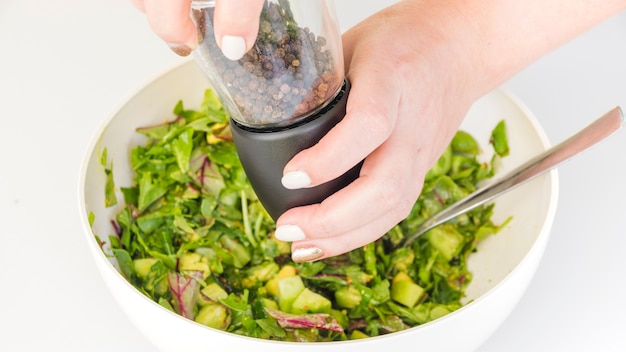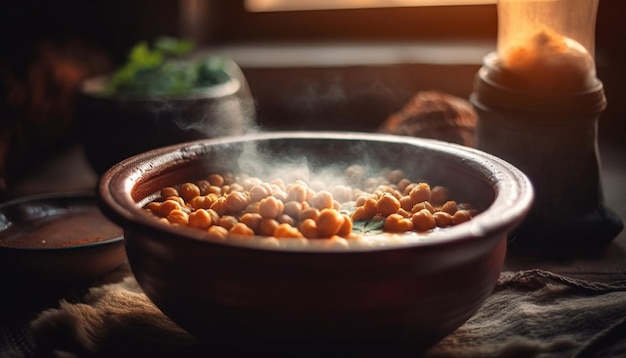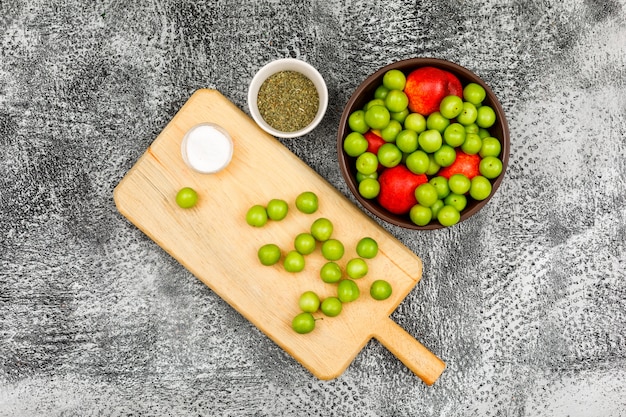Green Beans: A Culinary Primer

First, we need to understand the green bean. There are different types, and each one behaves slightly differently in the pan. Here's a rundown of the most common ones you'll likely encounter:
1. French Beans: The Classic Choice
These are the quintessential "green beans" – long and slender, with a delicate flavour that's perfect for a simple side dish. They're my personal favourite, and they're a great starting point for anyone new to cooking green beans.
2. Runner Beans: A Heartier Option
These are a bit thicker than French beans, with a slightly stronger, more robust flavour. They hold up well in stews and casseroles, where their texture and flavour add a nice depth to the dish.
3. Broad Beans: The Meaty Delight
These are the big guys! Flat and wide, broad beans have a mealy texture that's unique and quite satisfying. They often get peeled and used in salads, or as a standalone side dish.
So, knowing your bean is the first step towards green bean mastery. Now, let's talk about how to cook them. We'll focus on stovetop methods because it's simple, quick, and yields fantastic results. Boil, steam, or sauté – there's a method for every preference and every occasion.
(Part 2)Choosing the Perfect Green Beans: A Market Guide

Just like with any ingredient, fresh is best! You'll get the most flavour and texture when you choose fresh, vibrant green beans. Here's what to look for at the market:
1. Color Matters
Bright, vibrant green is a sign of freshness. Avoid any beans that look dull or yellowish.
2. Feel the Firmness
Green beans should be firm and crisp to the touch. They should snap with a bit of a "crack" when you bend them. If they're limp or bend easily, they've been sitting around for too long.
3. Inspect the Ends
The ends of the beans should be crisp and free of brown spots or dry edges. This indicates that the beans have been stored properly and are still fresh.
Once you've chosen your green beans, it's time to move on to the actual cooking. Remember, you're aiming for a perfect balance between tender and crisp – we want those "al dente" beans, where they're cooked through but still have a slight bite to them.
(Part 3)Boiling Green Beans: A Classic Method

Boiling is a simple and reliable way to cook green beans. It's great for larger batches and perfect if you're new to cooking them.
1. Prep for the Plunge
- Trim the ends off your green beans. You can snap them off with your fingers or use a knife for a cleaner cut.
- Give them a quick rinse under cold water to remove any dirt or debris.
2. Boil, Boil, Boil!
Fill a large pot with water – about 3-4 inches of water for every pound of green beans. Bring it to a rolling boil – you'll know it's ready when you see those bubbles bursting all over. Once boiling, add the green beans to the pot.
3. Timing is Key: The Art of the Test
The cooking time depends on the thickness of your green beans. Here's a general guide:
- French Beans: 3-4 minutes
- Runner Beans: 5-6 minutes
- Broad Beans: 8-10 minutes
But remember, every bean is different! After about 3 minutes, use a fork to scoop out a bean and taste it. It should be tender, but still have a slight bite. If it's still too firm, cook for another minute. Overcooked beans will become mushy and lose their vibrant green colour. The trick is to get them just right!
(Part 4)Steaming Green Beans: A Gentle Approach
Steaming is a fantastic way to cook green beans gently. It helps preserve their bright green colour and delicate flavour, and prevents them from becoming mushy. You'll need a steamer basket for this, which you can place over a pot of boiling water.
1. Ready for Steam
- Trim and rinse your green beans as usual.
- Place them in the steamer basket and set it over the pot of boiling water. Make sure the water is already boiling before you add the beans.
2. Let the Steam Work its Magic
Cover the pot with a lid and let the steam cook the beans.
3. Steaming Time: Check for Tenderness
The timing for steaming is similar to boiling, but a bit longer.
- French Beans: 4-5 minutes
- Runner Beans: 6-7 minutes
- Broad Beans: 8-10 minutes
Once again, use a fork to test for tenderness. If the beans are too firm, steam for another minute. Overcooked beans will lose their crispness and vibrant colour.
(Part 5)Sautéing Green Beans: A Quick and Flavorful Option
Sautéing is the quickest and most versatile way to cook green beans. You can add flavourful ingredients like garlic, onions, herbs, or a splash of wine for a truly delicious side dish.
1. Get Your Pan Ready
- Trim and rinse your green beans.
- Heat a large skillet over medium heat.
- Add a drizzle of olive oil or your favourite cooking oil.
- Add the green beans to the hot skillet and stir to coat them in the oil.
2. Sautéing with Flavor
This is where you can get creative! Add garlic, onions, or herbs to the skillet now. Sauté them for about 2-3 minutes, until they're fragrant and softened. Then, add the green beans to the skillet.
3. Sauté Time: Watch for Color Change
The timing for sautéing is a bit more flexible and depends on how crisp you like your beans.
- French Beans: 4-5 minutes
- Runner Beans: 6-7 minutes
- Broad Beans: 8-10 minutes
As they sauté, the green beans will deepen in colour and develop a slightly caramelized flavour. You'll know they're ready when they're tender but still have a bit of a bite.
(Part 6)Seasoning and Serving Green Beans: Elevate the Flavor
No matter which cooking method you choose, a few simple seasonings can transform plain green beans into a culinary delight.
1. Salt and Pepper: The Essential Duo
A pinch of salt and pepper is a must. I usually salt right before the beans are done cooking, and add pepper at the table for a fresh burst of flavour.
2. Herbs: A Burst of Freshness
Fresh herbs can make a world of difference. Try fresh thyme, rosemary, or parsley. Add them directly to the pot, skillet, or sprinkle them over the finished beans.
3. Garlic and Onion: A Savoury Touch
Garlic and onion are a classic pairing for green beans. Sauté them in the skillet, or add them to the pot during boiling or steaming. They'll add a rich, savoury depth to the flavour.
4. Get Creative: Beyond the Basics
Don't be afraid to experiment with different flavours! Try adding lemon juice, balsamic vinegar, or a splash of wine. You can also use toasted nuts, crumbled bacon, or even a dollop of sour cream for a unique twist.
5. Serving Suggestions: Green Bean Pairings
Green beans are a wonderful side dish for any meal. They go beautifully with grilled fish, chicken, or steak. You can also serve them with roasted vegetables, salads, or pasta dishes.
(Part 7)Green Bean Cooking Time: A Quick Reference Table
To make things super easy, here's a quick reference table for green bean cooking times. Keep in mind that these are just general guidelines, and you might need to adjust the time based on your own preference and the thickness of your beans.
| Method | French Beans | Runner Beans | Broad Beans |
|---|---|---|---|
| Boiling | 3-4 minutes | 5-6 minutes | 8-10 minutes |
| Steaming | 4-5 minutes | 6-7 minutes | 8-10 minutes |
| Sautéing | 4-5 minutes | 6-7 minutes | 8-10 minutes |
Storing Green Beans: Keeping Them Fresh
You can store green beans in the refrigerator or freeze them for later use.
1. Refrigerator Storage
Trim the ends off the green beans, rinse them, and place them in a plastic bag or container. Store them in the crisper drawer of your refrigerator for up to 5 days.
2. freezing green beans
To freeze green beans for longer storage, follow these steps:
- Blanch the beans: Bring a pot of water to a boil, add the green beans, and cook for 2-3 minutes.
- Shock them: Immediately drain the beans and plunge them into a bowl of ice water to stop the cooking process.
- Dry and Freeze: Once completely cooled, drain the beans and spread them out on a baking sheet lined with parchment paper. Place the baking sheet in the freezer for a few hours, or until the beans are frozen solid.
- Store for Later: Transfer the frozen beans to a freezer-safe bag or container.
Frozen green beans will last for up to 6 months. To use them, simply add them directly to soups, stews, or other dishes without thawing them first.
(Part 9)FAQs: Your Green Bean Questions Answered
Q1: What does it mean when green beans are “al dente”?
“Al dente” is an Italian term meaning “to the tooth”. It describes a food that's cooked through but still has a slight bite to it. This is the ideal texture for green beans – tender but not mushy, with a satisfying crunch.
Q2: How do I know if green beans are overcooked?
Overcooked green beans will be soft and mushy. They'll also lose their bright green colour and become dull. Their texture will be unappealing and their flavour will be muted.
Q3: Can I cook green beans in the microwave?
Yes, you can, but they won't be as crisp as if you boiled, steamed, or sautéed them. To cook them in the microwave, place them in a microwave-safe dish with a few tablespoons of water. Cover the dish with plastic wrap and microwave on high for 2-3 minutes, or until they're tender.
Q4: What are some other ways to cook green beans besides on the stovetop?
You can also cook green beans in the oven, on the grill, or in a pressure cooker. Just adjust the cooking time according to the method you're using.
Q5: What can I do with leftover green beans?
Leftover green beans are great for adding to salads, soups, or stews. You can also use them in a stir-fry or as a topping for a baked potato.
I hope this guide has been helpful! Next time you're cooking green beans, don't be afraid to experiment. There's no one right way to cook them – just find what you like best. And remember, the key is to find that perfect balance between crisp and tender. Happy cooking!
Everyone is watching

Corn on the Cob: The Ultimate Guide to Perfectly Cooked Ears
Healthy MealsAh, corn on the cob. Just the name evokes images of sunny days, barbecues, and that sweet, juicy flavour that ...

Scallops: The Ultimate Guide to Perfect Cooking
Healthy MealsAh, scallops. Those delicate, sweet, and utterly delicious morsels of the sea. They hold a special place in my...

Spaghetti Squash: The Ultimate Guide to Cooking and Serving
Healthy MealsRemember that time you saw spaghetti squash at the supermarket, looking all bumpy and strange, and thought, "W...

Salmon Cooking Times: Perfect Guide for Every Recipe
Healthy MealsLet me tell you, cooking salmon is an art form. It's all about getting that perfect balance: juicy and tender,...

Ham Cooking Time: How Long to Bake, Smoke, or Boil a Delicious Ham
Healthy MealsAh, ham. It's a classic, isn't it? A real crowd-pleaser, especially around holidays. And when done right, it'...
